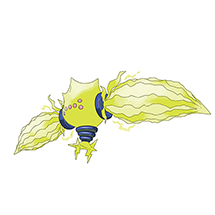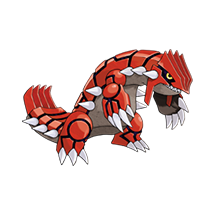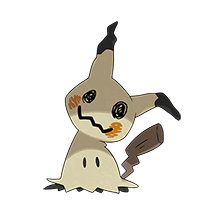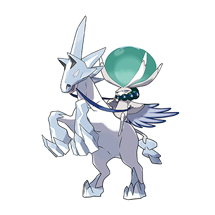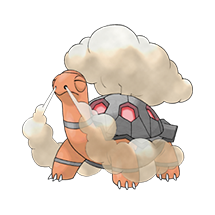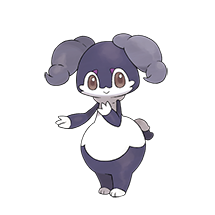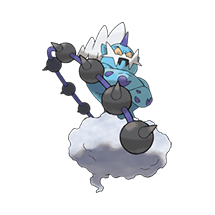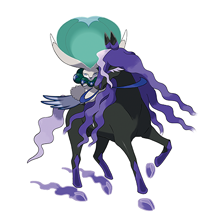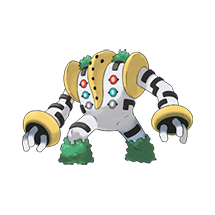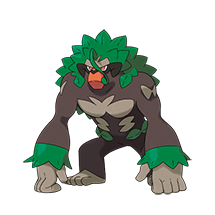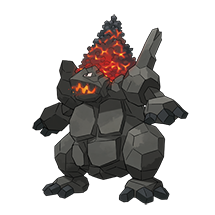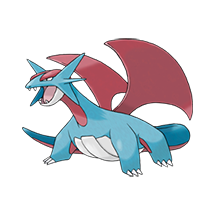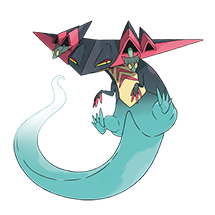Gabriel Agati is the only player
in the world to qualify for all three Pokémon Players Cup Global Finals. It’s
only fitting that he used a Coalossal team to qualify for this weekend’s
finals, considering that Coalossal has been on the last two teams to win Pokémon
Players Cups.
Gabriel used the standard
Coalossal core of Rillaboom, Coalossal, Dragapult, and Urshifu. For his
restricted Pokémon, he opted for Zacian—a strong choice considering Coalossal is
Gigantamaxed in almost every game it’s selected for. Gabriel’s last Pokémon was
a unique Salamence, designed to beat the popular sunlight core of Venusaur, Charizard,
and Groudon. Sunlight teams in particular can give Coalossal a tough time, but Salamence
drastically improved Gabriel’s matchup with them.
Gabriel wasn’t the only player to
qualify for the Global Finals with Coalossal. Three other players—Mike
D’Angelo, Roberto Poretti, and Joseph Ugarte—also used Coalossal teams, each
with their own unique twist. Mike, for example, used an offensive Dragapult
with Life Orb to give him another potential Dynamax option. Roberto used an Incarnate
Forme Landorus on his team, while Joseph was the only player out of the four to
not use Zacian, opting for Yveltal instead.
What to Expect from the Pokémon Players Cup III VG Finals
Pokémon to Watch

If the qualifying teams are any
indicator, it’s clear that the most popular restricted Pokémon are Groudon, Zacian,
Ice Rider Calyrex, and Shadow Rider Calyrex. (You can learn more about each of
these Pokémon in the Pokémon Players Cup III Video Game Region Finals Power Rankings.) I expect that the majority of our
finalists’ teams will include one of these Pokémon due to their consistency.
Kyogre in particular is interesting to me—many players expected it to be one of
the most dominant restricted Pokémon, but it failed to live up to expectations
in the Region Finals. Only one finalist, Jonathan Evans, qualified with a
Kyogre on their team. Despite this, I still think it can go toe-to-toe with the
other common restricted Pokémon, although it might not be as popular in the
finals. Other less common restricted Pokémon that I think could be strong picks
going into the Global Finals are Dialga, White Kyurem, Yveltal, Solgaleo, and Dusk
Mane Necrozma.
As for non-restricted Pokémon,
expect to see the following Pokémon in supportive roles: Umbreon, Whimsicott,
Amoonguss, Tornadus, Incineroar, Grimmsnarl, and Indeedee. These Pokémon
typically don’t do very much damage, but they aim to set up their teammates for
success. Grimmsnarl in particular has been an extremely consistent option in
Series 8 and will often set up Light Screen and/or Reflect to help its teammates
survive more attacks.
It’s also important for teams to
have offensive options outside of just their restricted Pokémon. Some common
picks include Therian Forme Thundurus, Therian Forme Landorus, Rillaboom,
Urshifu, and Regieleki. Several Gigantamax Pokémon have also had an appropriately
outsized impact on the format. Venusaur, Charizard, Lapras, and Coalossal were
all popular picks among the qualifying teams and will likely continue to see
usage in the Global Finals.
General Strategies
Sunlight: Teams featuring the Drought
Ability have been incredibly dominant in Series 8 and will be one of the top
strategies to look out for in the Global Finals. Six of the 16 finalists qualified
using some kind of harsh sunlight core. More dedicated sunlight teams will
utilize Groudon as their restricted Pokémon alongside Pokémon like Gigantamax
Venusaur and Charizard. You may also see players just use Venusaur and Torkoal,
allowing them to take advantage of harsh sunlight while also utilizing a restricted
Pokémon other than Groudon. These teams typically aim to deal massive amounts
of damage, especially through residual damage from G-Max Vine Lash or G-Max Wildfire.
Venusaur in particular is such a strong option in Series 8 because it is
unpredictable—it can either go for a Sleep Powder right away or just
Gigantamax and start attacking immediately. I think that it’s highly likely
that the top teams in the Global Finals will either have a Venusaur or an
extremely strong counter to Venusaur.

Hyper Offense: Hyper offense teams in Series 8
typically utilize extremely powerful but frail Pokémon. They are heavily
reliant on gaining an early lead with their Dynamax in the opening turns of the
game. Speed control is especially important for these team compositions, so
expect to see Pokémon like Whimsicott or Tornadus to help set up Tailwind. Many
hyper offense teams in Series 8 use Shadow Rider Calyrex as their restricted Pokémon—Alberto
Daza, Alejandro Diaz, and Daniel Quek all qualified for the Global Finals with
a hyper-offensive team featuring Calyrex.
Weakness Policy Setup: Weakness Policy is
an extremely popular item choice in Series 8, turning already-strong Pokémon
into offensive juggernauts. Eight out of the 16 qualifying players had a
Weakness Policy on their team, giving it to Pokémon like Metagross, Solgaleo, Coalossal,
or Ice Rider Calyrex. These teams also have some way to easily activate Weakness
Policy. Such strategies are especially difficult to play against because they
often command a lot of respect just in team preview. If you do not lead
properly against a Weakness Policy combo, your opponent can activate it
immediately and start making knockouts from the opening turns of the match. One
thing to watch out for in particular is how competitors position their Weakness
Policy holders. Many teams don’t actually lead with their Weakness Policy setup
if they think it’d put them at risk of giving up early knockouts.
Concluding Thoughts
It’s been a couple of years since
we last saw restricted Pokémon in competitions. Since then, several Pokémon,
such as Rayquaza, Xerneas, and Lunala, have fallen out of popularity, while new
Pokémon, especially Zacian and Calyrex, have risen to glory. Meanwhile, Kyogre
and Groudon continue to be staples in the format, as they have been in every
format where they’ve been permitted. Will the new Pokémon Sword and Pokémon
Shield Legendary Pokémon finally knock Kyogre and Groudon off their throne,
or will the Hoenn duo continue their reign on top? We’ll have to wait and see
this weekend!

Moving away from restricted Pokémon,
we have to talk about Coalossal. After Coalossal teams won both Pokémon Players
Cup I and Players Cup II, players started to joke about the possibility of it
winning a third title in a row. After the Region finals, it doesn’t really feel
like a joke anymore—four of the 16 qualifying teams used Coalossal. I’m eager
to see how players counter it this time around, because few were able to stop
it in the last two finals.
Speaking of the last two finals—both
Pokémon Players Cup I and II were won by North American players. It’ll be
exciting to see which region takes home the title this time around, especially
since almost every finalist is looking for their very first major win. The
tournament is filled with familiar faces, such as Jonathan Evans, runner-up at
the 2016 World Championships, as well as Joseph Ugarte and Gabriel Agati, who
will be competing in their second and third Players Cup Global Finals
respectively.
The combination of double
elimination and best-of-five sets for the Winners Finals, Losers Finals, and
Grand Finals will certainly be a sight to watch as well. We can theoretically
see up to 15 games of Pokémon between the same two players in this tournament!
Either way, I can’t wait to see how the largest Series 8 tournament concludes—don’t
forget to tune into the Pokémon Players Cup III finals live at Twitch.tv/Pokemon or YouTube.com/Pokemon on April 23–25!
Aaron Zheng
Aaron is a VGC competitor, commentator, and content creator. He has been competing in the Video Game Championships since 2008. Since then, he's won five Regional Championships and two National Championships. He has also qualified for eight World Championships and placed third at the 2013 World Championships. In more recent years, Aaron has been focused on creating online content. He joined the live commentary team for VGC streams in 2016. Outside of Pokémon, Aaron is completing two undergraduate degrees in Economics and Applied Mathematics.



